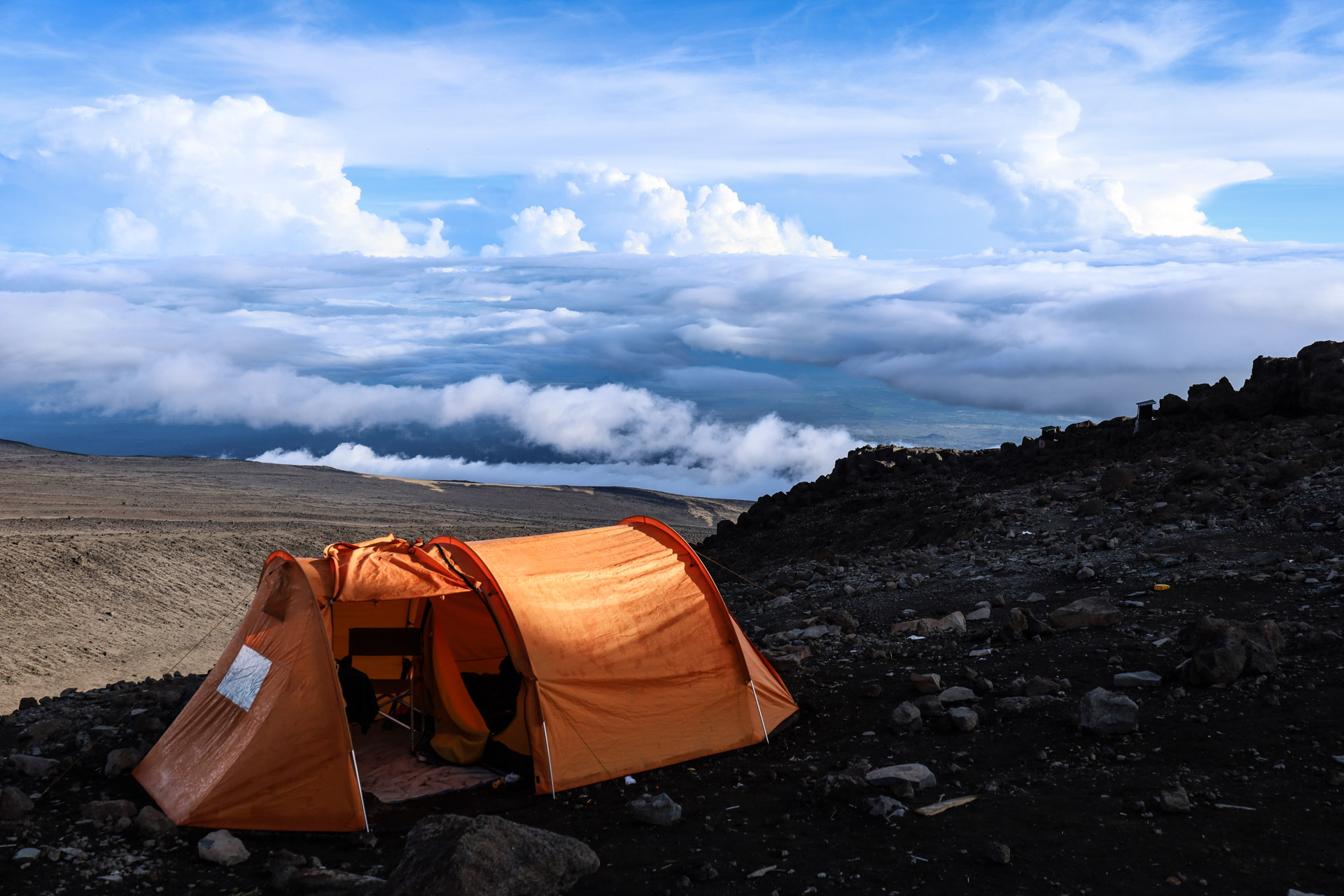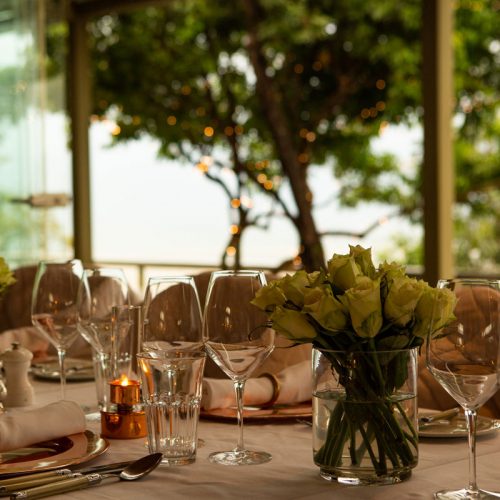
Mount Kilimanjaro first came into my sights in April 2022, when we were in Kimana Sanctuary getting to know the area ahead of the opening of Angama Amboseli. One morning at dawn, we set out on a Pyjama Safari and, like the rest of the team, I peered up at Kili in awe. Likely contrary to what the rest of the team was thinking, I decided that one day I would make it to the top.
Working at our beautiful new lodge at the end of last October ahead of its opening and, knowing I was going to be so close, I decided this was my time. After two weeks of staring down the world’s tallest free-standing mountain from every angle of Angama Amboseli (including the shower), the day of departure arrived. I tore myself away from my lovely new colleagues who said 'Farewell!' as if it was the last time they would see me. Lochiam, one of Angama's Guides, drove me the 40 minutes to the Tarakea border where I passed into Tanzania, packed all my gear in the back of a taxi and grabbed a Kilimanjaro Lite beer — adventure time.
I can now say that the only ‘lite’ thing about Kilimanjaro is the beer. The hiking wasn’t too hard or too far, as we would average about 10km a day and the pace was slow and steady — but you can’t plan for everything. I had been prepared to hear ‘pole pole’ (‘slowly’ in Swahili) at frequent intervals but instead, our guides went for a cheery ‘easy-peasy’ whenever the going got tough. More often than not, however, the tough that got going was the weather.
I had done the research and knew that November was the rainy season, but I thought to myself, how bad could it actually be? I had scrounged around at the bottom of my family’s camping gear (probably untouched for 10+ years) and found a plastic rain poncho that I figured would be just the ticket for the one or two light drizzles I expected to face on the six-day hike. Enter El Niño.
We set out on the first day and hadn’t gone 20 minutes before the plastic poncho had to be whipped out. It was then that I realised my error. The poncho was open on both sides with some flimsy pop buttons to secure it. Nevertheless, I was still optimistic as we were in the rainforest, after all. Surely it would ease up. After the third day of constant rain, many kilometres and a few beautiful ecosystems later, my poncho gave up and split down the back and down the front. It was now four strips of blue plastic held together at the hood by a prayer. Luckily, I had packed some physio tape to try to keep my knees from splitting apart on the descent and I used most of it to seal up the back of the poncho — knees be damned.
While I do like to complain, it wasn’t as bad as all that (blue poncho aside). The porters, chef and guides went above and beyond to make the experience as comfortable as possible, often racing ahead to set up the tents and get water on the boil so we could have a dry place to relax and a hot bucket of water to wash off the mud.
There were many unexpected wins with the rain. For one, the trails and campsites were blissfully empty. We were also treated to an unbelievably beautiful, snowy summit. My team and I were fast after blitzing through the rain for four days. In fact, we were so fast that we broke our guide’s summiting time record — we were the last to leave base camp at around 01h45 and the first to arrive at the summit at exactly 06h00, just in time for one of the most beautiful sunrises I have ever seen.
If you would like to hear the tips and tricks learnt the hard way of climbing Kili, please don’t hesitate to reach out. It was a truly exceptional experience for Charlotte and she would recommend it to anybody wanting a big adventure. Our team of Travel Planners will be more than happy to help you plan your climb — her biggest piece of advice is to do Kili first and then enjoy some well-deserved pampering at Angama Amboseli.
Filed under: East Africa Travel
Subscribe for Weekly Stories
Comments (0):

Weddings in the Mara